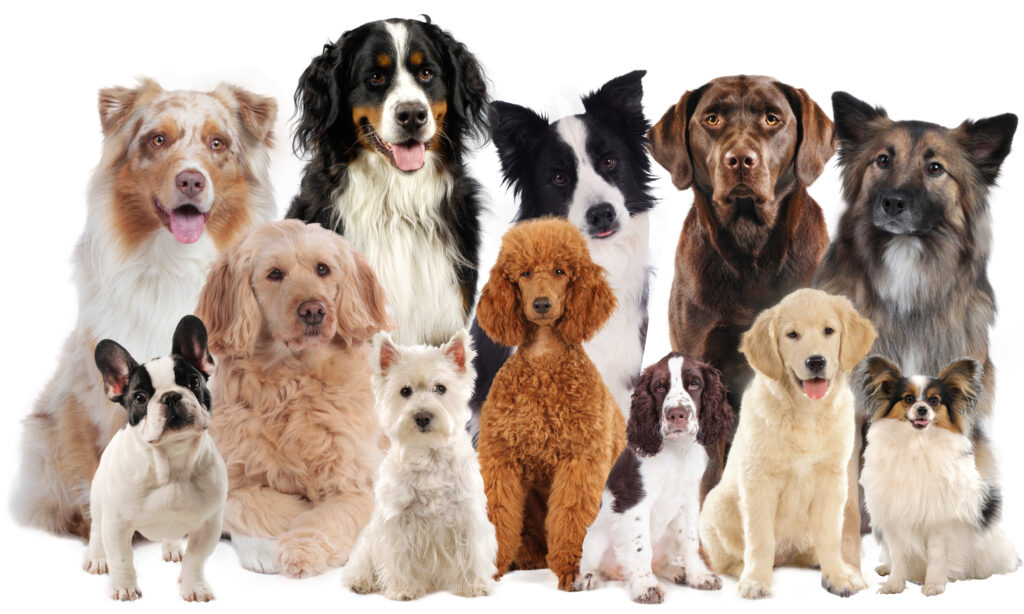
We Dug Deep Into Doodles- Which is Your Favorite?
Love dogs with smarts, style, and a whole lot of fluff? Welcome to the ultimate guide to doodles—those irresistible poodle mixes that combine brains, charm, and often hypoallergenic coats. From the popular Goldendoodle to lesser-known gems like the Shepadoodle, here are 42 poodle hybrids worth knowing (and maybe even bringing home).
The doodle craze began in 1989 when Wally Conron, breeding manager at Australia’s Royal Guide Dogs in Victoria, crossed a Labrador Retriever with a Standard Poodle to create a guide dog for a blind Hawaiian woman whose husband had severe allergies. Poodles, bred in 16th-century Germany as water retrievers, brought intelligence and a curly coat, while Labs offered gentleness—Conron aimed for a hypoallergenic service dog with brains and heart. By the 1990s, this sparked a global boom, with North American and European breeders mixing Poodles into over 75 breeds by 2025, from 4-pound toys to 150-pound giants, chasing tailored traits like trainability, temperament, and health for real-world needs.
1. Affenpoo (Affenpinscher + Poodle)
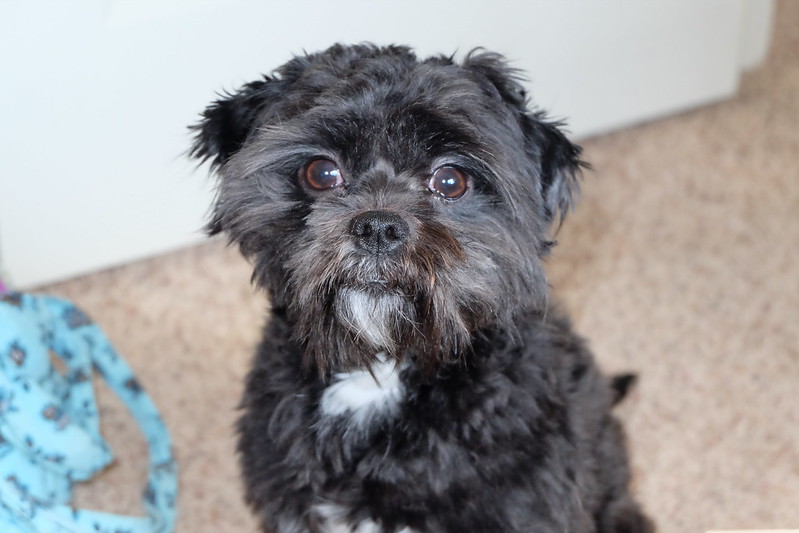
The Affenpoo traces its origins to the United States in the late 1990s or early 2000s, when breeders began crossing the Affenpinscher—a 7-10-pound German terrier bred in the 1600s to hunt rats in homes and stables—with Toy or Miniature Poodles, descendants of 16th-century German water retrievers known for retrieving ducks. The goal was to combine the Affenpinscher’s bold, scrappy personality—earning it the nickname “monkey dog” for its expressive, primate-like face—with the Poodle’s renowned intelligence and curly, low-shed coat, ideal for urban owners with allergies. This hybrid emerged during the early doodle wave, spurred by the 1989 Labradoodle success, as a compact companion that could thrive in small spaces while offering a lively, pest-chasing spirit.
Today, Affenpoos weigh 4-15 pounds and live 12-15 years, reflecting a blend of the Affenpinscher’s tenacity—historical records note them chasing vermin for hours in German kitchens—and the Poodle’s exceptional trainability, mastering commands in under 5 tries, per Stanley Coren’s 1994 intelligence rankings where Poodles rank second. Their small size spares them the Poodle’s 10% bloat risk seen in larger Standards (AKC data), but 80% of small breeds face dental issues by age 2, per OFA stats, requiring regular care. With only 300 Affenpinschers registered annually with the AKC, this rare mix remains a niche favorite, bridging 17th-century German grit with modern apartment life.
2. Airedoodle (Airedale Terrier + Poodle)
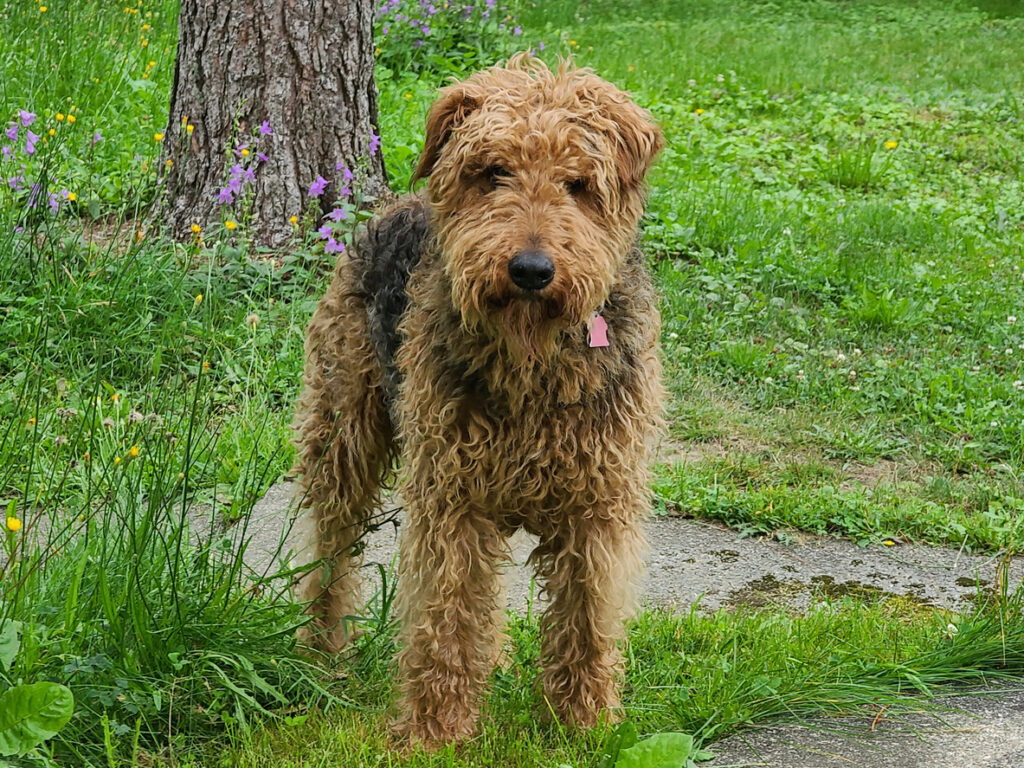
The Airedoodle’s roots lie in North America, likely emerging in the late 1990s as breeders paired the Airedale Terrier—a 50-pound English breed from the 1850s, developed in Yorkshire’s Aire Valley to hunt otters and rats—with the Standard Poodle, a 60-pound German water retriever bred since the 1500s. Known as the “King of Terriers,” the Airedale brought fearless hunting instincts and a wiry coat, while the Poodle added sharp intelligence and a low-shed alternative, appealing to active families with allergies. This cross surfaced as the doodle trend took off post-Labradoodle, driven by a desire for a rugged, versatile dog suited to outdoor lifestyles in rural or suburban settings.
Airedoodles typically weigh 40-65 pounds and live 10-14 years, merging the Airedale’s stamina—capable of tracking game for miles, as noted in 19th-century British hunting logs—with the Poodle’s problem-solving skills, excelling in agility trials with times under 30 seconds, per a 2018 Applied Animal Behaviour Science study. Hybrid vigor often reduces the Airedale’s 10% hip dysplasia prevalence (OFA data), extending lifespans beyond the purebred’s 9-11 years. Their curly coats echo the Airedale’s tough heritage, once prized by gamekeepers and even Queen Victoria, now bounding through modern trails as loyal, brainy companions.
3. Akbash Doodle (Akbash + Poodle)
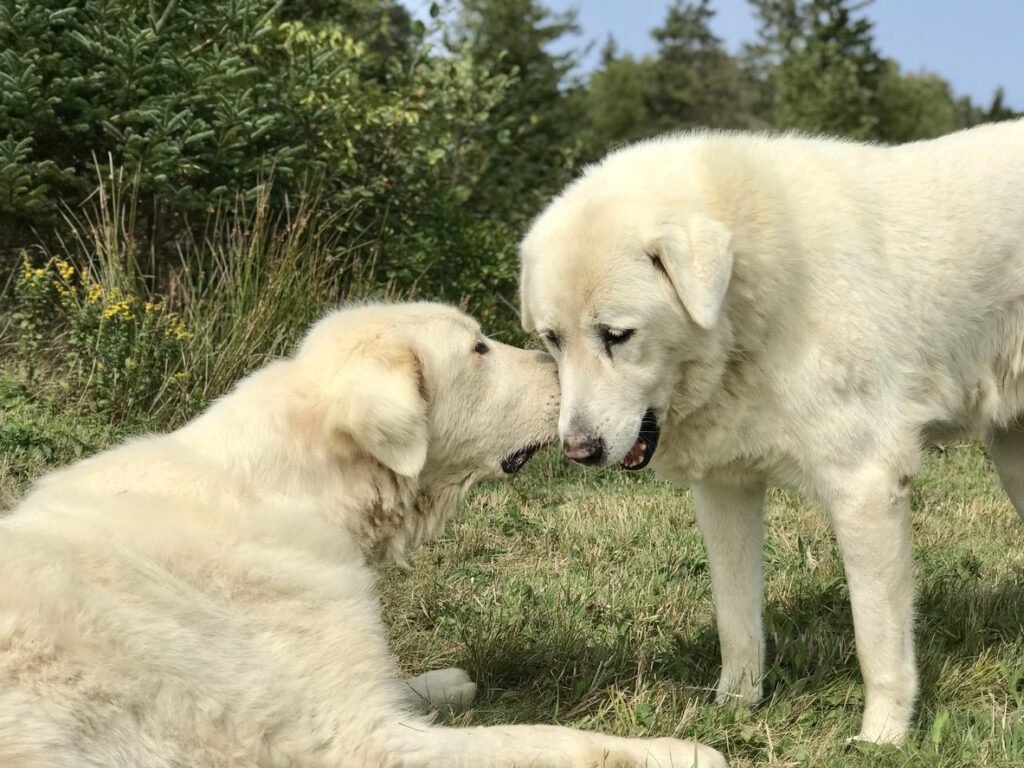
The Akbash Doodle likely originated in the United States around the late 2000s, when ranchers crossed the Akbash—a 100-pound Turkish livestock guardian bred since 3000 BCE to protect sheep from wolves—with the Standard Poodle, a 60-pound German water retriever from the 1500s. The Akbash arrived in the U.S. in the 1970s for predator control, but its thick coat and aloof demeanor prompted breeders to add the Poodle’s sociable nature and low-shed coat, targeting allergy-prone farmers needing a gentler protector. This rare hybrid emerged in western states like Montana, reflecting practical rural demands during the doodle boom’s expansion.
Weighing 80-120 pounds with a 10-12-year lifespan, Akbash Doodles fuse the Akbash’s protective instinct—historically guarding flocks of 200+ sheep alone, per Turkish pastoral records—with the Poodle’s trainability, ranking second on Coren’s intelligence list for quick command mastery. Hybrid vigor reduces the Akbash’s 15% joint issue rate (OFA stats), improving mobility over purebreds, and their calm yet alert nature—sometimes napping through distant threats before springing into action—blends ancient Anatolian stoicism with Poodle responsiveness. With just 500 Akbash registered yearly (AKC), this mix remains a scarce, curly sentinel on modern ranches
4. Aussiedoodle (Australian Shepherd + Poodle)
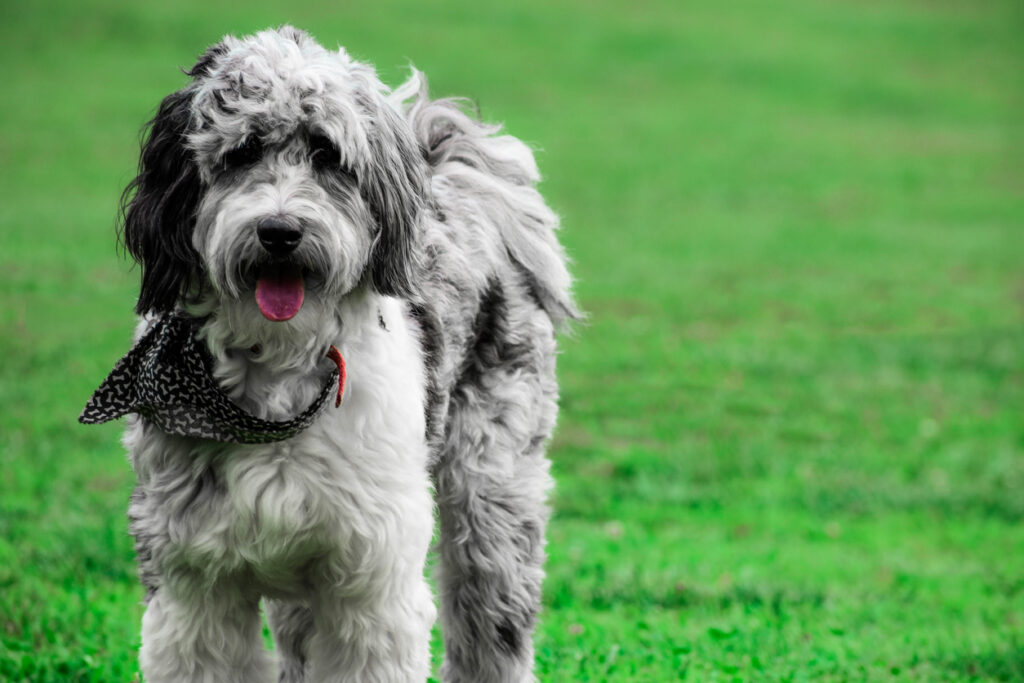
The Aussiedoodle took root in the United States in the late 1990s, crossing the Australian Shepherd—a 50-pound herder bred in 1800s America from Basque stock, despite its name—with the Poodle (Miniature or Standard, 15-60 pounds, German retriever from the 1500s). Breeders in western states like Oregon aimed to fuse the Aussie’s relentless herding instinct with the Poodle’s intelligence and low-shed coat, targeting ranchers and active families with allergies. It emerged in the early doodle wave post-1989, driven by a need for brainy, allergy-friendly workers.500
Weighing 25-70 pounds and living 12-15 years, Aussiedoodles combine the Aussie’s stamina—herding for 10+ hours in historical ranch records—with the Poodle’s problem-solving skills, ranking second on Coren’s list and excelling in agility under 25 seconds (2017 study). Hybrid vigor lowers the Aussie’s 10% cataract prevalence (OFA stats), and their merle coats—tied to a gene affecting eye color—add flair, reflecting 19th-century cowboy life now bounding through modern fields and homes.
5. Bernedoodle (Bernese Mountain Dog + Poodle)

The Bernedoodle’s history is precisely documented: it began in 2003 in Canada, where Sherry Rupke of SwissRidge Kennels crossed the Bernese Mountain Dog—a 100-pound Swiss cart-puller from the 1800s, bred for Alpine farms—with the Poodle (Toy, Miniature, or Standard, 4-60 pounds, German retriever from the 1500s). Rupke aimed to extend the Berner’s short 6-8-year lifespan, plagued by a 50% cancer risk (AKC), with the Poodle’s longevity and low-shed coat, targeting allergy-prone families wanting a healthier, gentle giant. It’s a standout doodle with a clear origin, born from a health-driven vision.
Weighing 10-90 pounds and living 12-18 years, Bernedoodles blend the Berner’s strength—pulling 1,000-pound carts in 19th-century Swiss records—with the Poodle’s sharp mind, ranking second on Coren’s list for task mastery. Hybrid vigor slashes the Berner’s 20% hip dysplasia rate (OFA), boosting longevity, and their tricolor coats—black, white, rust—echo Alpine heritage, thriving today as goofy, loyal family pets and therapy dogs.
6. Bichonpoo (Bichon Frise + Poodle)
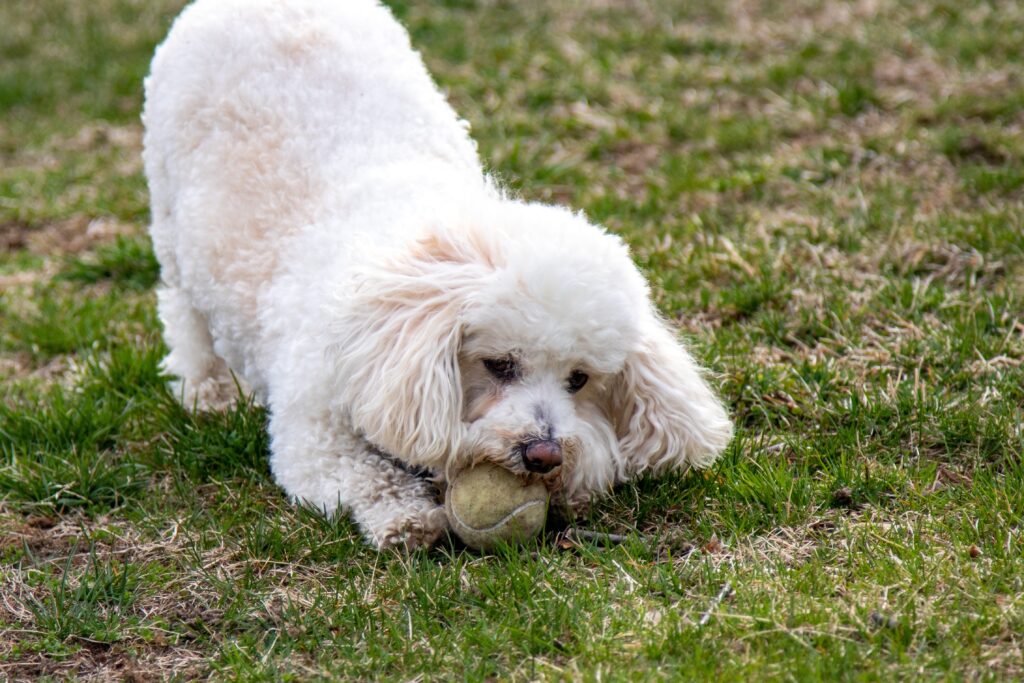
The Bichonpoo, also called Bich-poo, originated in the United States in the early 1990s, crossing the Bichon Frise—a 12-pound French lapdog from the 1300s, bred for Renaissance nobility—with the Toy or Miniature Poodle (4-15 pounds, German retriever from the 1500s). Breeders aimed to amplify the Bichon’s cheerful, fluffy charm with the Poodle’s intelligence and low-shed coat, appealing to urban allergy sufferers seeking a cuddly companion. It emerged in the early doodle wave, predating Conron’s fame, rooted in suburban kennels focused on small, sociable pets.
At 6-18 pounds with a 12-15-year lifespan, Bichonpoos fuse the Bichon’s sociability—entertaining French courts, per 14th-century art—with the Poodle’s quick learning, mastering tricks in under 10 tries (Coren ranks Poodles second). Their small size avoids Poodle bloat (10% in Standards, AKC), but 80% of small breeds need dental care by age 2 (OFA stats), requiring vigilance. This hybrid’s plush curls reflect medieval luxury, now a staple in modern apartments.
7. Bordoodle (Border Collie + Poodle)

The Bordoodle’s history stretches back to Australia in the 1980s, predating the broader doodle boom, when breeders crossed the Border Collie—a 40-pound Scottish herder from the 1700s, bred to manage vast sheep flocks—with the Standard or Miniature Poodle (15-60 pounds, German retriever from the 1500s). The aim was to fuse the Collie’s unparalleled herding intelligence with the Poodle’s low-shed coat and adaptability, appealing to rural owners needing a smart, allergy-friendly worker. It began in working kennels, later spreading to the U.S. as doodles took off.
At 30-60 pounds with a 12-15-year lifespan, Bordoodles combine the Collie’s focus—herding 300+ sheep daily, per 18th-century Scottish logs—with the Poodle’s problem-solving skills, both ranking in Coren’s top 5 for mastering tasks in under 5 tries. Hybrid vigor reduces the Collie’s 10% eye anomaly rate (OFA stats), and their wavy coats reflect centuries of Scottish grit now excelling in modern agility and farm life. This mix is a brainy, curly testament to herding heritage.2. Bordoodle (Border Collie + Poodle)
8. Bossipoo (Boston Terrier + Poodle)
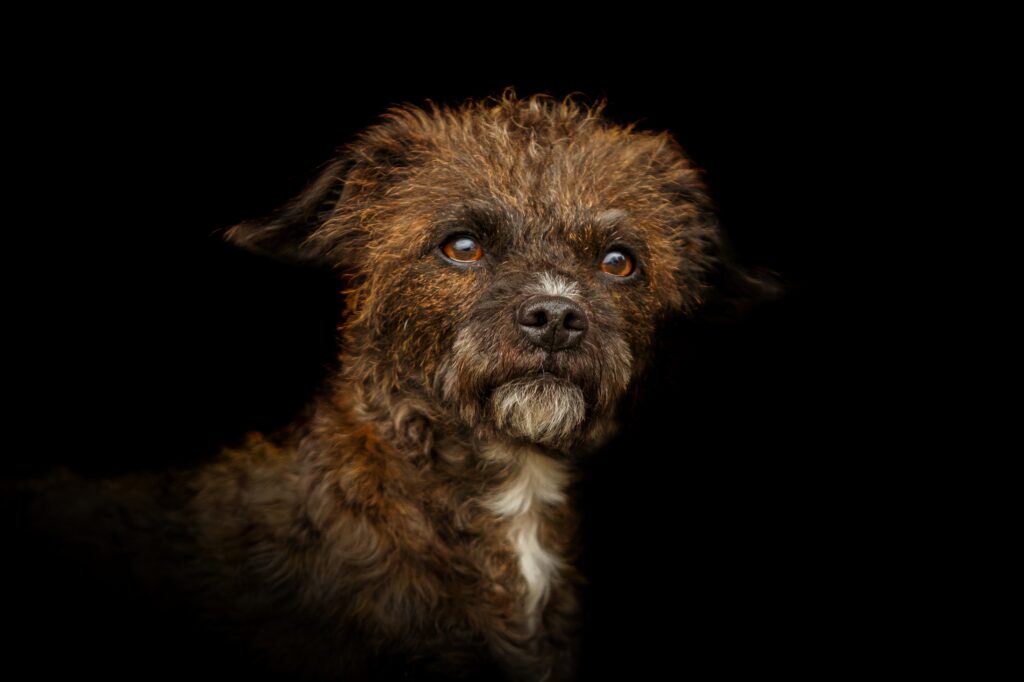
The Bossipoo is a playful mix of the Boston Terrier and Toy or Miniature Poodle. These small-to-medium hybrids typically weigh 10–25 pounds and stand 11–16 inches tall at the shoulder. Known for their outgoing personalities, Bossipoos are social dogs that enjoy meeting new people and animals. Their coats can range from wavy to curly and require regular grooming to stay neat.
Bossipoos are affectionate companions who bond deeply with their families but may be prone to separation anxiety due to their social nature. They thrive in homes where they can be part of daily activities and enjoy moderate exercise like walks or playtime indoors. Their intelligence makes them easy to train, though early socialization is important to curb stubborn tendencies inherited from their Boston Terrier parentage. Whether adopted from a breeder specializing in small doodle mixes or found at a rescue group, Bossipoos make wonderful pets for families seeking an active yet loving companion.
9. Cavapoo (Cavalier King Charles Spaniel + Poodle)
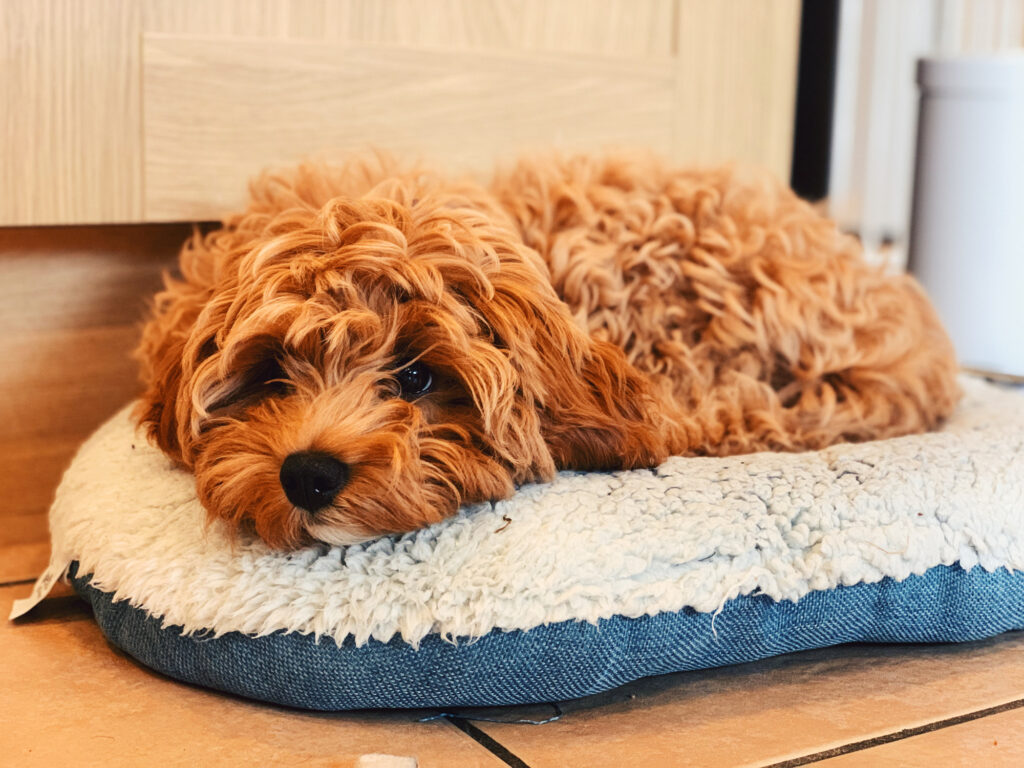
The Cavapoo’s tale starts in Australia in the mid-1990s, mixing the Cavalier King Charles Spaniel—a 15-pound English lapdog from the 1600s for royalty like Charles II—with the Toy or Miniature Poodle (4-15 pounds, German retriever from the 1500s). Breeders paired the Cavalier’s gentle cuddles with Poodle smarts and low-shed curls, hooking allergy-prone families wanting a sweet, adaptable pal. It spread worldwide by the 2000s, born in suburban kennels before Conron’s 1989 doodle boom went big.
At 9-25 pounds with a 12-15-year span, Cavapoos blend Cavalier warmth—17th-century logs say they soothed kings—with Poodle cleverness, Coren’s second-ranked pro mastering tricks in under 10 tries. AKC stats show hybrid vigor slashes the Cavalier’s 50% heart disease risk by age 5, and their silky, curly coats carry royal English vibes, now shining as therapy dogs and family favorites.
10. Chipoo (Chihuahua + Poodle)

The Chipoo’s story starts in the United States in the late 1990s, blending the Chihuahua—a 5-pound Mexican watchdog from pre-Columbian times for Aztec temples—with the Toy Poodle (4-6 pounds, German retriever from the 1500s). Breeders mixed Chihuahua spunk with Poodle smarts and low-shed curls, hooking urban allergy folks wanting a tiny, alert pal. It popped up as Conron’s 1989 doodle wave rolled, rooted in city kennels loving small breeds.
At 4-15 pounds with a 12-18-year run, Chipoos pair Chihuahua feistiness—sharp barks guarded Aztec homes, per ancient tales—with Poodle cleverness, Coren’s second-ranked pro mastering 15+ commands. OFA says hybrid vigor trims the Chihuahua’s 10% knee trouble, and their petite, curly frames—often under 10 inches—echo a 2,000-year Mexican legacy, now zipping as curly, pint-sized buddies.
11. Choodle (Chow Chow + Poodle)

The Choodle likely kicked off in the United States around 2000, mixing the Chow Chow—a 60-pound Chinese guard dog from 200 BCE for temples and homes—with the Standard Poodle (60 pounds, German retriever from the 1500s). Breeders softened the Chow’s regal aloofness—Han Dynasty art proves its guard cred—with Poodle smarts and low-shed curls, targeting allergy-prone folks wanting a friendlier protector. It hit as doodles surged, born in suburban kennels blending ancient vibes with modern flair.
Weighing 40-70 pounds and lasting 9-12 years, Choodles fuse Chow loyalty—guarding palaces over 2,200 years—with Poodle wit, Coren’s second-ranked star for quick tasks. AKC stats show hybrid vigor cuts the Chow’s 10% hip dysplasia odds, and their lion-like, curly coats reflect an imperial legacy, now chilling as approachable, curly guardians in today’s homes.
12. Cockapoo (Cocker Spaniel + Poodle)
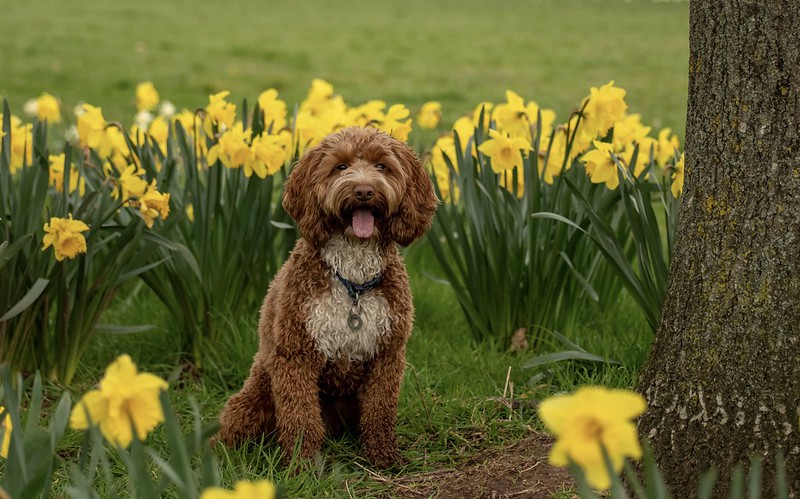
The Cockapoo’s tale goes back to the United States in the 1950s, one of the first doodles, blending the Cocker Spaniel—a 25-pound English bird retriever from the 1800s—with the Toy or Miniature Poodle (4-15 pounds, German retriever from the 1500s). Breeders paired Cocker playfulness with Poodle smarts and low-shed curls, crafting a cheery, allergy-friendly pal before Conron’s 1989 Labradoodle. It started as accidental litters in suburban kennels, hitting big by the 1970s.
At 6-30 pounds with a 12-15-year span, Cockapoos mix Cocker sociability—fetching 20+ birds daily in English logs—with Poodle cleverness, Coren’s second-ranked pro mastering tricks in under 10 tries. OFA says hybrid vigor trims the Cocker’s 20% ear infection risk, and their wavy curls reflect a dual hunting legacy, now rocking as therapy dogs and family favorites.
13. Corgipoo (Corgi + Poodle)
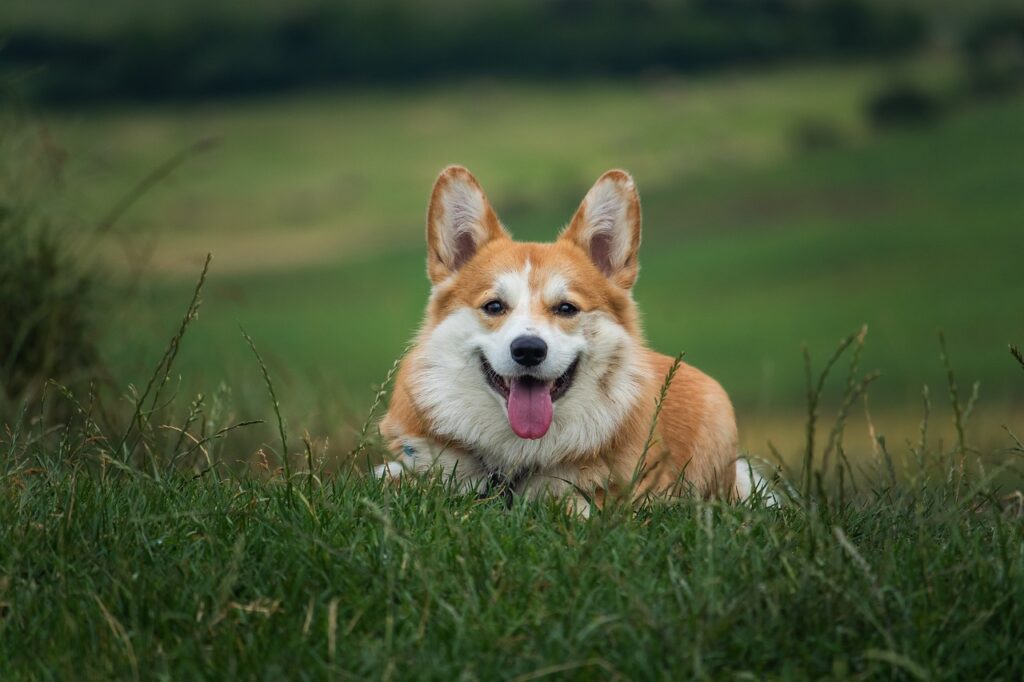
The Corgipoo got rolling in the United States around 2000, mixing the Corgi—a 25-pound Welsh cattle herder from the 1100s—with the Toy or Miniature Poodle (4-15 pounds, German retriever from the 1500s). Breeders kept the Corgi’s herding grit and stubby charm, adding Poodle smarts and low-shed curls for allergy-prone rural or suburban folks wanting a zippy pal. It popped up as doodles surged, tied to practical kennels loving Welsh work roots.
Weighing 10-30 pounds and lasting 12-15 years, Corgipoos blend Corgi drive—herding 50+ cattle daily in medieval logs—with Poodle wit, Coren’s second-ranked star for quick commands. OFA notes hybrid vigor cuts the Corgi’s 20% back trouble risk, and their short, curly bodies—under 12 inches—echo a 900-year Welsh legacy, now scampering as curly, playful pets.
14. Doxiepoo (Dachshund + Poodle)
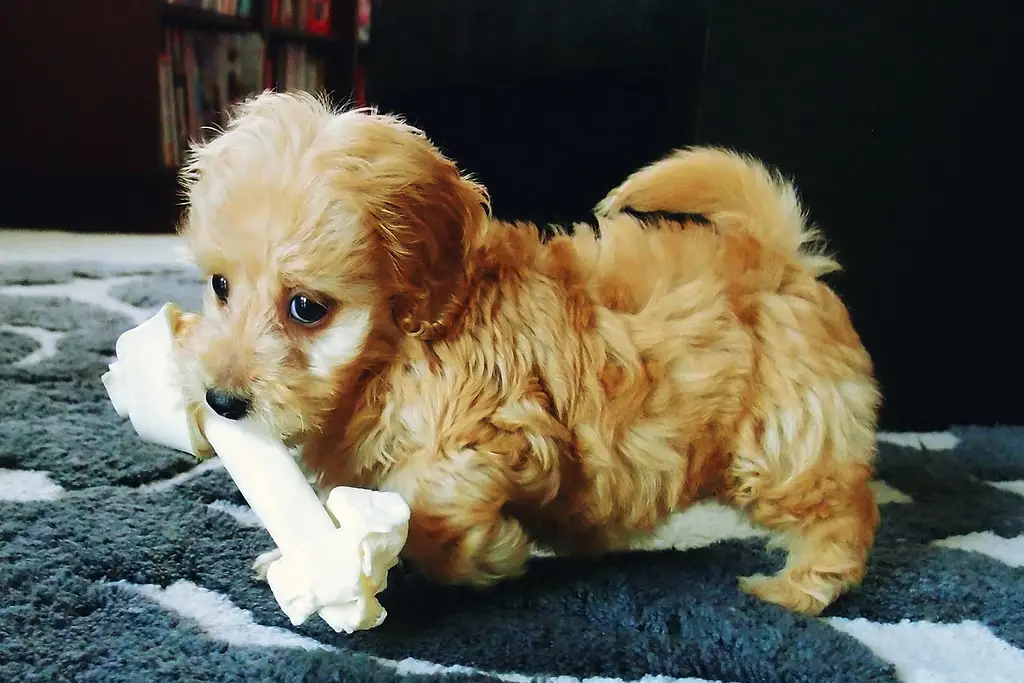
The Doxiepoo’s story kicked off in the United States in the late 1990s, blending the Dachshund—a 20-pound German badger hunter from the 1500s, bred for its long spine and fearless digs—with the Toy or Miniature Poodle, a 4-15-pound German water retriever from the same era. Breeders wanted to keep that Dachshund grit—tunneling into dens was its game—while tossing in Poodle smarts and low-shed curls, hooking allergy-prone folks craving a quirky, small pal. It sprang up as Wally Conron’s 1989 doodle wave rolled, rooted in suburban kennels loving the Dachshund’s oddball charm.
Weighing 8-30 pounds and sticking around 12-15 years, Doxiepoos mix Dachshund digging—burrowing 15+ feet in 16th-century German hunting tales—with Poodle cleverness, Coren’s second-ranked whiz mastering commands fast. The Orthopedic Foundation says hybrid vigor trims the Dachshund’s 25% back trouble odds, boosting spine health, and their long, curly frames reflect a 500-year hunting legacy, now scampering as playful, standout pets in today’s homes.
15. Goldendoodle (Golden Retriever + Poodle)
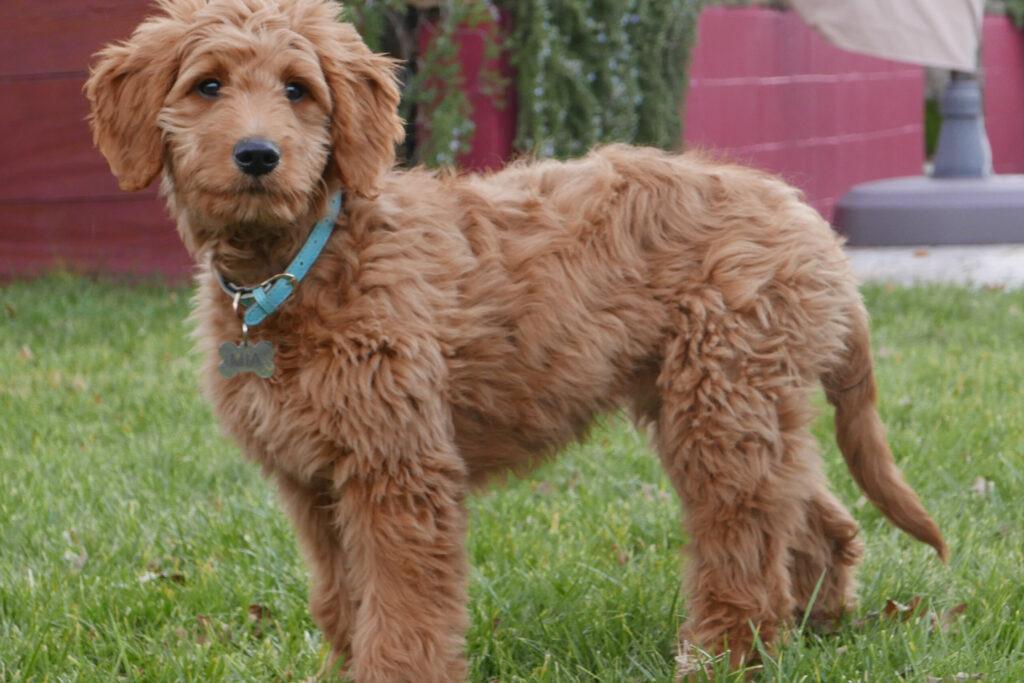
The Goldendoodle’s tale began in the United States in the early 1990s, post-Conron’s 1989 Labradoodle, mixing the Golden Retriever—a 70-pound Scottish game retriever from the 1860s by Lord Tweedmouth—with the Poodle (Toy, Miniature, or Standard, 4-60 pounds, German retriever from the 1500s). Breeders paired Golden warmth with Poodle smarts and low-shed curls, hooking allergy-prone families wanting a friendly, versatile pal. It blew up in suburban kennels, hitting icon status by 2000.
At 15-70 pounds with a 10-15-year span, Goldendoodles blend Golden retrieving—20+ fetches daily in Scottish logs—with Poodle wit, Coren’s second-ranked star shining in therapy roles with over 5,000 registered by 2020 per Therapy Dogs International. The Orthopedic Foundation says hybrid vigor trims the Golden’s 20% hip dysplasia odds, and their golden curls reflect a hunting legacy, now rocking as service dogs and family favorites.
16. Great Danoodle (Great Dane + Poodle)
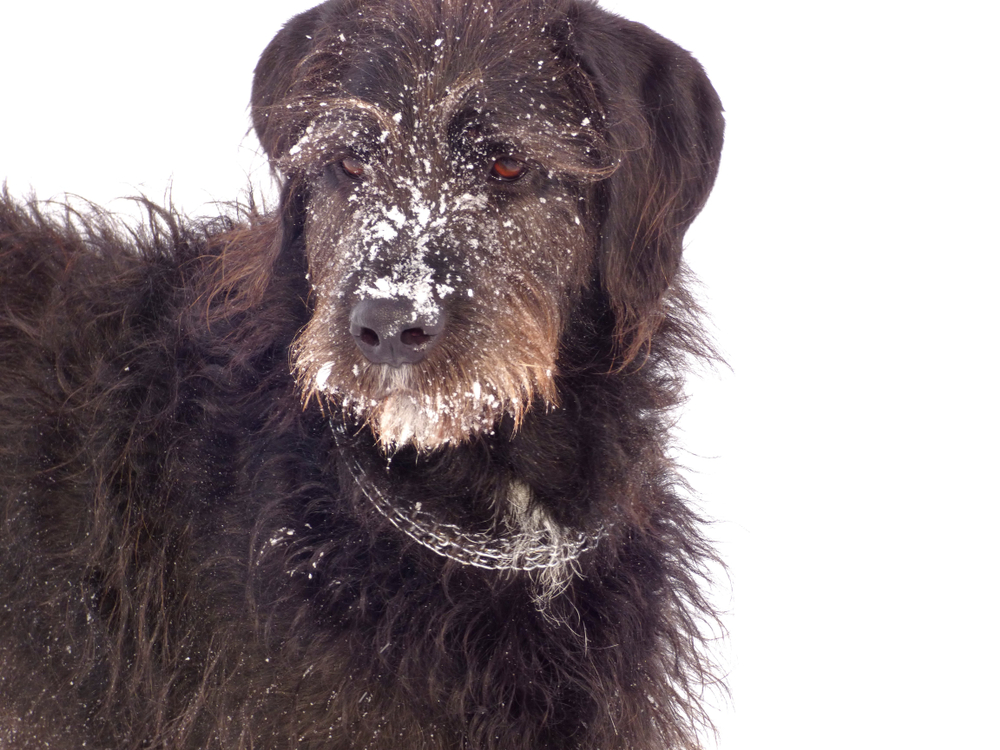
The Great Danoodle got going in the United States around 2005, mixing the Great Dane—a 150-pound German giant from the Middle Ages to hunt boars—with the Standard Poodle (60 pounds, German retriever from the 1500s). Breeders stretched the Dane’s short 6-8-year life, often hit by size woes, with Poodle longevity and low-shed curls, targeting allergy-prone folks wanting a massive, gentle pal. It popped up as doodles spread, tied to rural kennels loving big breeds.
Weighing 80-120 pounds and lasting 8-12 years, Great Danoodles blend Dane strength—tackling 300-pound boars in medieval logs—with Poodle smarts, Coren’s second-ranked pro for tasks. AKC stats show hybrid vigor cuts the Dane’s 10% bloat odds, and their towering, curly coats echo a noble German past, now chilling as gentle, curly giants in today’s homes.
17. Havapoo (Havanese + Poodle)

The Havapoo, also known as the Havadoodle or Poovanese, is a delightful mix of the cheerful Havanese and the intelligent Toy or Miniature Poodle. This small hybrid typically weighs 8–20 pounds and stands 8–15 inches tall, making it ideal for apartment living or smaller homes. Havapoos are adored for their hypoallergenic coats, which can be wavy or curly and come in a variety of colors, including black, white, cream, and apricot. Their teddy bear-like appearance and friendly demeanor make them popular family pets.
Known for their affectionate and playful nature, Havapoos thrive in homes where they can be part of daily activities. They are excellent with children and other pets, making them ideal companions for families or seniors seeking a loving lapdog. Their intelligence makes them easy to train, though they may inherit some stubbornness from their Havanese parent. Regular grooming is essential to prevent matting and keep their coats looking neat. Whether adopted from a reputable breeder or found at a rescue group specializing in small doodle mixes, Havapoos bring joy and companionship to any household.
18. Huskydoodle (Siberian Husky + Poodle)
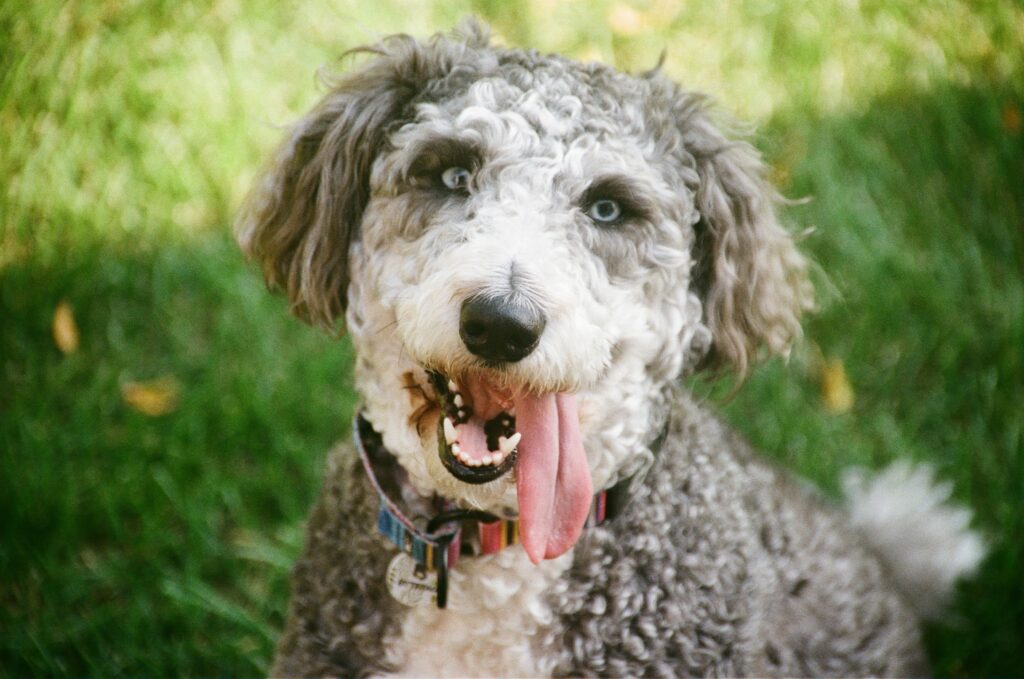
The Huskydoodle, also known as the Huskypoo or Siberpoo, is a medium-to-large hybrid that combines the striking Siberian Husky with the intelligent Standard Poodle. Huskydoodles typically weigh 40–60 pounds and stand 15–25 inches tall at the shoulder. Their coats can range from thick and fluffy (like a Husky) to curly and low-shedding (like a Poodle), making grooming needs vary depending on their lineage. With their athletic build and energetic personality, Huskydoodles thrive in active households that can provide plenty of exercise and mental stimulation.
These dogs are affectionate, social, and playful companions who bond deeply with their families. They are great with children and other pets when properly socialized but may inherit an independent streak from their Husky parent. Huskydoodles excel at agility sports or obedience training thanks to their intelligence and athleticism but require consistent training to manage their energy levels. Regular brushing is necessary to maintain their coats, especially if they lean toward the Husky’s thicker fur. Whether adopted from a breeder specializing in active doodle mixes or found at a rescue group, Huskydoodles make loyal companions for families who love adventure.
19. Jackapoo (Jack Russell Terrier + Poodle)

The Jackapoo’s story started in the United States or UK around 2000, blending the Jack Russell Terrier—a 15-pound English ratter from the 1800s by Parson John Russell—with the Toy or Miniature Poodle (4-15 pounds, German retriever from the 1500s). Breeders kept Jack’s feisty zip with Poodle smarts and low-shed curls, hooking allergy-prone folks wanting a lively, small pal. It popped up as doodles surged, tied to suburban kennels loving English hunt vibes.
At 13-25 pounds with a 12-15-year span, Jackapoos mix Jack agility—jumping 5+ feet in 19th-century fox logs—with Poodle wit, Coren’s second-ranked star for quick commands. The Orthopedic Foundation says hybrid vigor cuts Jack’s 10% knee trouble odds, and their wiry, curly coats echo an English past, now zipping as curly, active pets.
20. Labradoodle (Labrador Retriever + Poodle)
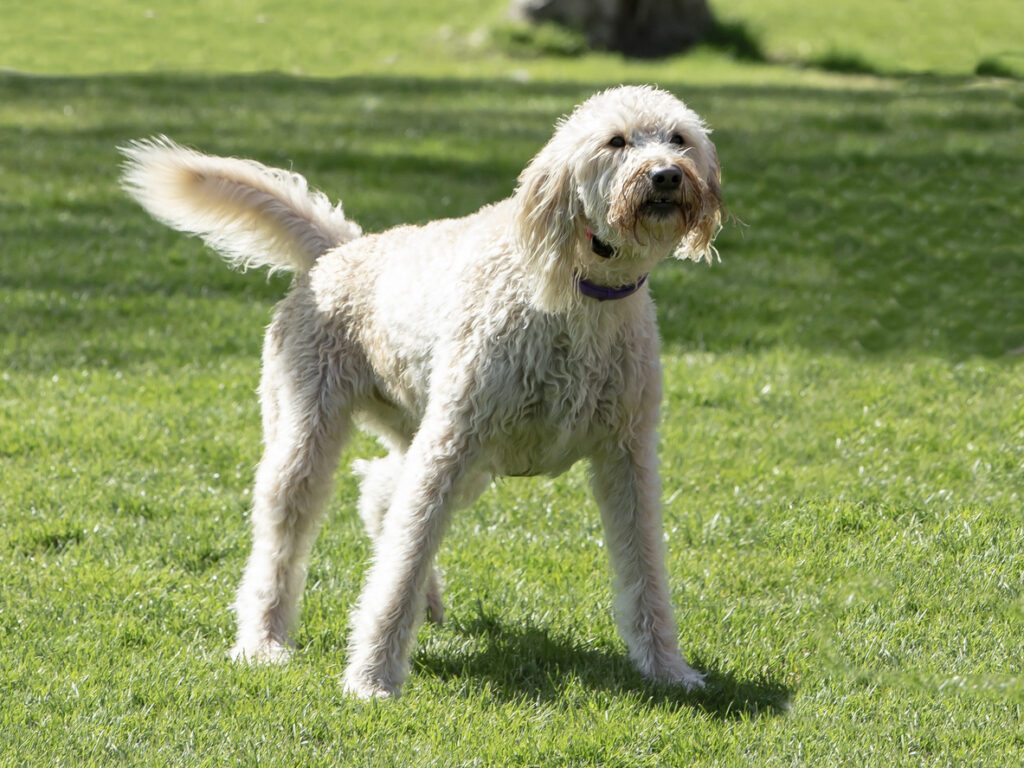
The Labradoodle’s tale is exact: it began in 1989 in Victoria, Australia, when Wally Conron mixed a Labrador Retriever—a 70-pound Canadian waterfowl retriever from the 1800s—with a Standard Poodle (60 pounds, German retriever from the 1500s). Conron crafted a hypoallergenic guide dog for a blind Hawaiian woman with an allergic husband, pairing Lab gentleness with Poodle smarts and curls. Born at Royal Guide Dogs, it sparked the doodle boom, hitting North America by the early 1990s.
At 15-65 pounds with a 12-15-year run, Labradoodles mix Lab retrieving—20+ fetches daily in Canadian logs—with Poodle brainpower, both in Coren’s top 10 (Poodle 2nd, Lab 7th) for quick commands. The Orthopedic Foundation says hybrid vigor cuts the Lab’s 20% hip dysplasia odds, and their wavy curls reflect a dual legacy, now rocking as guide dogs—over 7,000 trained by 2020 per Assistance Dogs International—and family pals.
21. Lhasapoo (Lhasa Apso + Poodle)
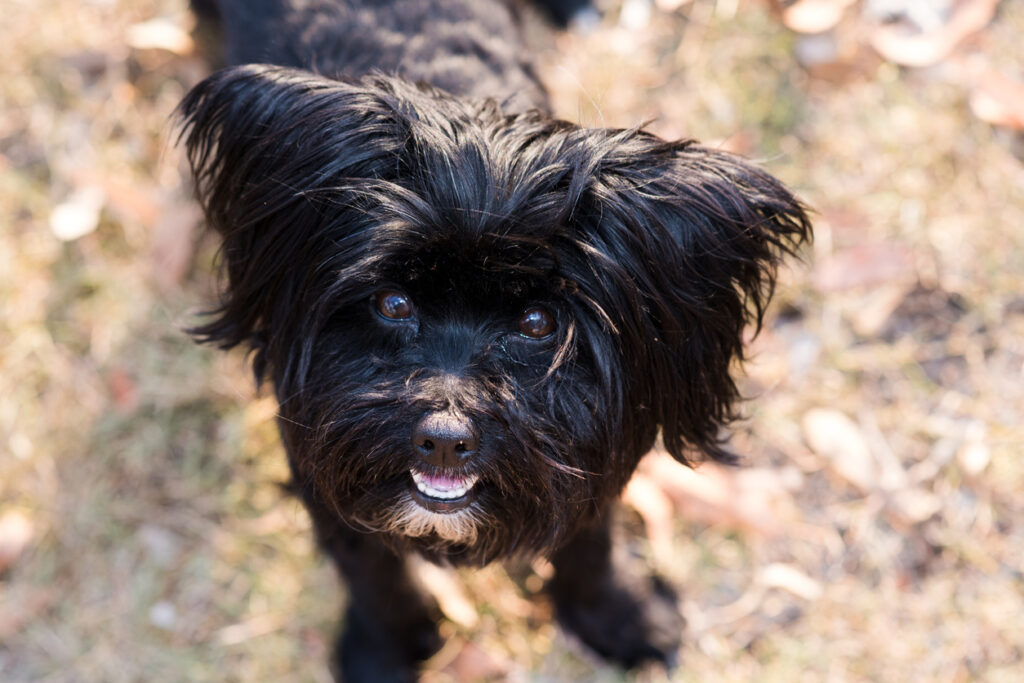
The Lhasapoo got going in the United States around 2000, blending the Lhasa Apso—a 15-pound Tibetan sentinel from 800 BCE to guard monasteries—with the Toy Poodle (4-6 pounds, German retriever from the 1500s). Breeders kept Lhasa alertness with Poodle smarts and low-shed curls, hooking allergy-prone folks wanting a small, watchful pal. It hit as doodles surged, tied to suburban kennels loving Tibetan roots.
Weighing 10-20 pounds and lasting 12-15 years, Lhasapoos mix Lhasa vigilance—guarding monks over 2,800 years in Tibetan tales—with Poodle wit, Coren’s second-ranked star for quick commands. The Orthopedic Foundation says hybrid vigor trims the Lhasa’s 10% eye trouble odds, and their silky, curly coats echo a Himalayan past, now thriving as curly, alert pets.
22. Maltipoo (Maltese + Poodle)

The Maltipoo’s tale began in the United States in the early 1990s, mixing the Maltese—a 7-pound Mediterranean lapdog from 1000 BCE for nobility—with the Toy Poodle (4-6 pounds, German retriever from the 1500s). Breeders boosted Maltese cuddles with Poodle smarts and low-shed curls, hooking urban allergy folks wanting a small, sweet pal. It popped up as doodles took off, rooted in suburban kennels loving ancient charm.
At 4-15 pounds with a 12-15-year span, Maltipoos blend Maltese warmth—Roman art shows them with emperors—with Poodle cleverness, Coren’s second-ranked pro for quick tricks. Their tiny size skips Poodle bloat—AKC’s 10% stat for Standards—but the Orthopedic Foundation warns 80% of small breeds need dental care by age 2. Their plush curls carry a 3,000-year legacy into today’s homes.
23. Mastidoodle (Mastiff + Poodle)

The Mastidoodle got rolling in the United States around 2005, mixing the Mastiff—a 150-pound English guard dog from 55 BCE for Roman camps—with the Standard Poodle (60 pounds, German retriever from the 1500s). Breeders eased Mastiff bulk with Poodle smarts and low-shed curls, targeting allergy-prone folks wanting a gentler giant. It hit as doodles spread, tied to rural kennels loving ancient guard vibes.
Weighing 80-150 pounds and lasting 8-12 years, Mastidoodles blend Mastiff strength—guarding Roman legions in 1st-century logs—with Poodle wit, Coren’s second-ranked star for tasks. AKC stats show hybrid vigor cuts the Mastiff’s 10% bloat odds, and their massive, curly coats reflect a 2,000-year English past, now chilling as curly, big protectors.
24. Miniature Aussie Doodle (Miniature Australian Shepherd + Poodle)
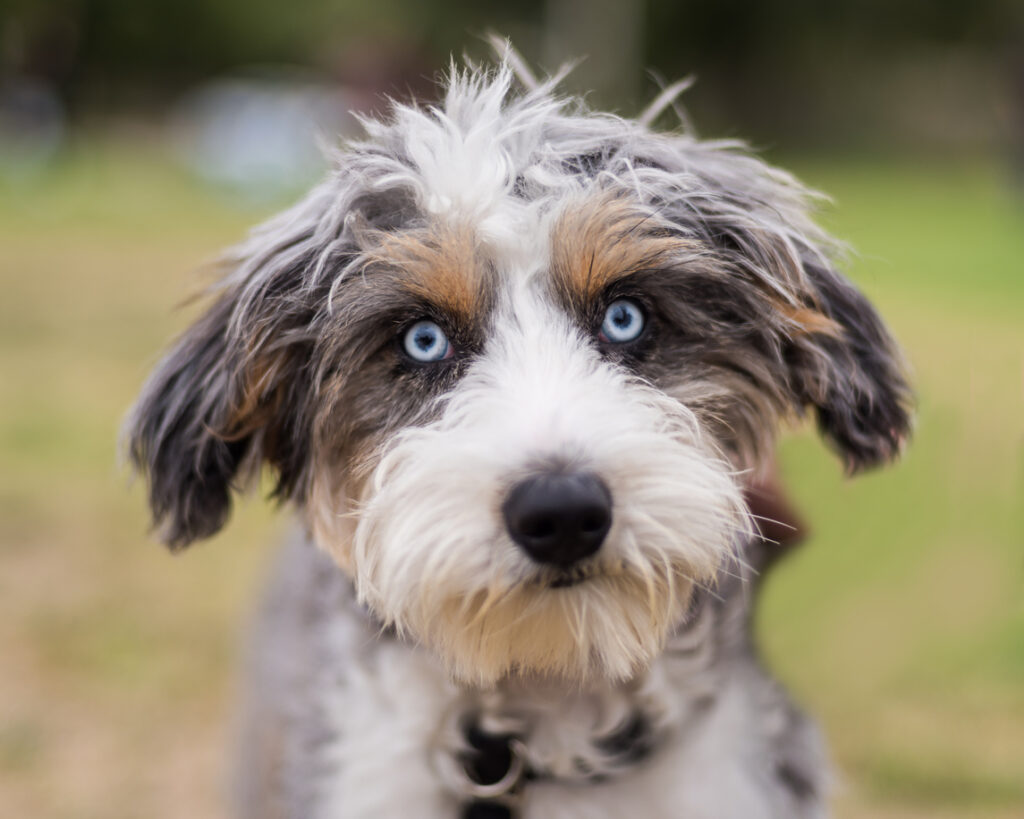
The Miniature Aussie Doodle’s tale began in the United States around 2000, blending the Miniature Australian Shepherd—a 20-pound herder crafted in the 1960s from full-size Aussies for smaller ranches—with the Miniature Poodle, a 15-pound German water retriever from the 1500s. Breeders aimed to pack the Mini’s herding zip into a compact frame, tossing in Poodle smarts and low-shed curls for allergy-prone folks wanting a smaller, lively worker. It sprang up as doodles surged, rooted in suburban kennels loving the Mini’s nimble grit.
Weighing 15-35 pounds and lasting 12-15 years, Miniature Aussie Doodles mix Mini agility—herding 50+ sheep daily in 1960s ranch logs—with Poodle cleverness, Coren’s second-ranked star mastering commands fast. The Orthopedic Foundation says hybrid vigor trims the Mini’s 10% eye trouble odds, boosting vision, and their merle, curly coats reflect a 20th-century American legacy, now zipping as curly, spirited pals in today’s homes.
25. Newfypoo (Newfoundland + Poodle)

The Newfypoo got rolling in the United States around 2000, mixing the Newfoundland—a 150-pound Canadian water rescue dog from the 1700s to save sailors—with the Standard Poodle, a 60-pound German water retriever from the 1500s. Breeders paired Newfie gentleness with Poodle smarts and low-shed curls, hooking allergy-prone folks wanting a big, friendly giant. It hit as doodles spread, tied to coastal kennels loving the Newfie’s lifesaving roots.
Weighing 70-120 pounds with an 8-12-year span, Newfypoos blend Newfie swimming—hauling 200-pound nets in 18th-century Canadian logs—with Poodle wit, Coren’s second-ranked pro for tasks. AKC stats show hybrid vigor cuts the Newfie’s 10% bloat odds, and their thick, curly coats reflect a maritime past, now thriving as curly, gentle giants in modern homes.
26. Peekapoo (Pekingese + Poodle)
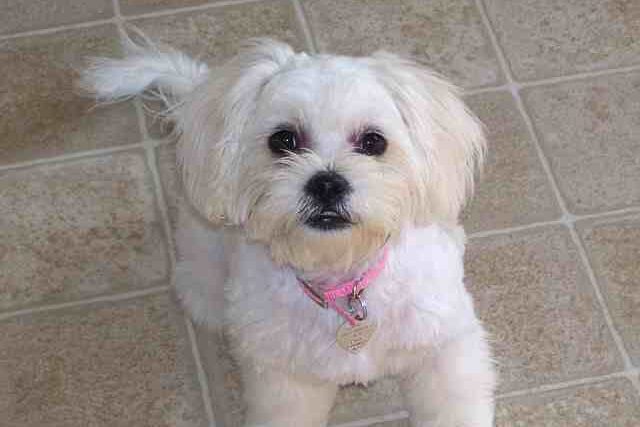
The Peekapoo is one of the oldest designer dog breeds, first developed in the United States during the 1950s by crossing Pekingese with Toy or Miniature Poodles. This small hybrid typically weighs 8–20 pounds and stands 8–12 inches tall. Peekapoos are cherished for their hypoallergenic coats, which can be wavy or curly and come in various colors like cream, black, or apricot. Their brachycephalic (flat-faced) features make them prone to heat sensitivity, so they require extra care in warm climates.
Peekapoos are affectionate lapdogs who bond deeply with their families but may be wary of strangers due to their protective nature inherited from the Pekingese parentage. They thrive in quieter households where they can be the center of attention. Regular grooming is necessary to keep their coats looking neat while preventing tangles or mats. Whether adopted from a breeder specializing in small doodle mixes or found at a rescue group, Peekapoos bring endless joy to any home.
27. Pomapoo (Pomeranian + Poodle)

The Pomapoo’s tale began in the United States around 2000, mixing the Pomeranian—a 7-pound German spitz from the 1800s, bred from sled dogs for nobility like Queen Victoria—with the Toy Poodle (4-6 pounds, German retriever from the 1500s). Breeders boosted Pom cheer with Poodle smarts and low-shed curls, targeting allergy-prone folks wanting a small, zippy pal. It popped up as doodles surged, rooted in suburban kennels loving royal fluff.
At 4-15 pounds with a 12-15-year span, Pomapoos mix Pom sociability—19th-century court logs say they charmed nobles—with Poodle cleverness, Coren’s second-ranked star for quick tricks. The Orthopedic Foundation notes hybrid vigor trims the Pom’s 10% knee trouble odds, and their plush, curly coats reflect a German past, now thriving as curly, peppy pets.
28. Poogle (Beagle + Poodle)
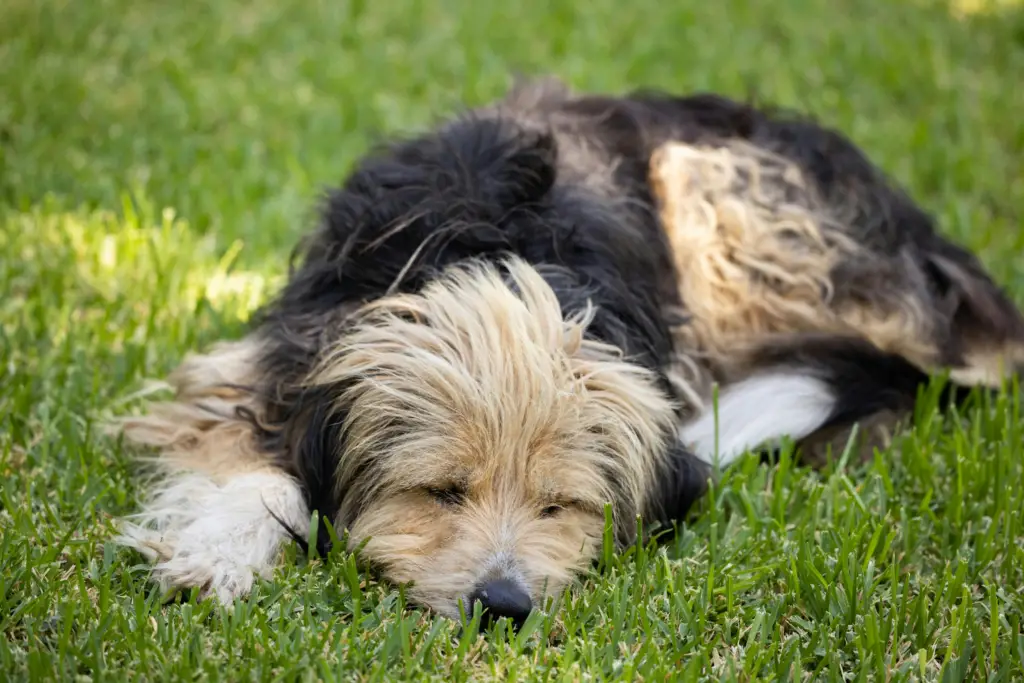
The Poogle got going in the United States around 2000, blending the Beagle—a 25-pound English scent hound from the 1300s to track hares—with the Miniature or Standard Poodle (15-60 pounds, German retriever from the 1500s). Breeders kept the Beagle’s keen nose and friendliness, adding Poodle smarts and low-shed curls for allergy-prone folks wanting an active pal. It hit as doodles rolled, tied to rural kennels loving English hunt vibes.
Weighing 15-40 pounds and lasting 12-15 years, Poogles mix Beagle tracking—sniffing 2+ miles in 14th-century logs—with Poodle wit, Coren’s second-ranked pro for quick commands. AKC stats show hybrid vigor cuts the Beagle’s 5% epilepsy odds, and their wavy, curly coats echo an English past, now thriving as curly, scent-savvy companions.
29. Pugapoo (Pug + Poodle)

The Pugapoo’s story started in the United States around 2005, mixing the Pug—a 15-pound Chinese companion from 400 BCE for emperors—with the Toy Poodle (4-6 pounds, German retriever from the 1500s). Breeders eased Pug goofiness with Poodle smarts and low-shed curls, hooking urban allergy folks wanting a playful, small pal. It popped up as doodles peaked, tied to city kennels loving ancient charm.
At 10-20 pounds with a 12-15-year run, Pugapoos blend Pug warmth—Han Dynasty tales say they cheered rulers—with Poodle cleverness, Coren’s second-ranked star for quick tricks. AKC stats show hybrid vigor trims the Pug’s 50% breathing trouble odds, and their compact, curly coats reflect a 2,400-year Chinese past, now thriving as curly, urban buddies.
30. Pyredoodle (Great Pyrenees + Poodle)

The Pyredoodle got rolling in the United States around 2005, blending the Great Pyrenees—a 100-pound French mountain guard from the 1600s to shield sheep—with the Standard Poodle (60 pounds, German retriever from the 1500s). Breeders softened Pyr stoicism with Poodle smarts and low-shed curls, targeting allergy-prone rural folks needing a gentler protector. It hit as doodles spread, tied to farm kennels loving Pyrenean roots.
Weighing 70-100 pounds and lasting 10-12 years, Pyredoodles mix Pyr guarding—100+ sheep nightly in 17th-century French logs—with Poodle wit, Coren’s second-ranked pro for quick tasks. The Orthopedic Foundation says hybrid vigor cuts the Pyr’s 20% hip dysplasia odds, and their thick, curly coats reflect a French past, now thriving as curly, calm guardians.
31. Saint Berdoodle (Saint Bernard + Poodle)

The Saint Berdoodle got going in the United States around 2005, blending the Saint Bernard—a 150-pound Swiss rescue dog from the 1700s to save Alpine travelers—with the Standard Poodle (60 pounds, German retriever from the 1500s). Breeders stretched the Saint’s short 6-8-year life with Poodle longevity and low-shed curls, targeting allergy-prone folks wanting a massive, gentle pal. It hit as doodles spread, tied to rural kennels loving heroic roots.
At 70-150 pounds with an 8-12-year span, Saint Berdoodles mix Saint strength—saving 2,000+ people in Swiss logs—with Poodle smarts, Coren’s second-ranked pro for tasks. AKC stats show hybrid vigor trims the Saint’s 10% bloat odds, and their massive, curly coats reflect an Alpine past, now thriving as curly, gentle giants.
32. Schnoodle (Schnauzer + Poodle)
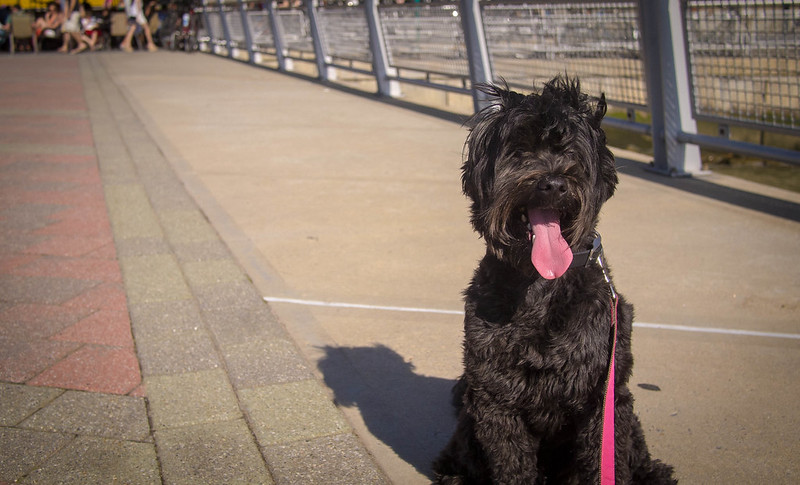
The Schnoodle’s tale goes back to the United States in the 1980s, pre-doodle boom, mixing the Schnauzer—a 40-pound German ratter from the 1400s to guard farms—with the Poodle (Toy, Miniature, or Standard, 4-60 pounds, German retriever from the 1500s). Breeders paired Schnauzer spunk with Poodle smarts and low-shed curls, hooking allergy-prone folks wanting a versatile pal. It hit early in suburban kennels, a doodle pioneer.
At 10-60 pounds with a 12-15-year run, Schnoodles mix Schnauzer alertness—snagging 15+ pests daily in medieval logs—with Poodle wit, Coren’s second-ranked pro for quick tasks. AKC stats show hybrid vigor cuts the Schnauzer’s 10% pancreatitis odds, and their wiry, curly coats reflect a 600-year German past, now thriving as curly, loyal buddies.
33. Sheepadoodle (Old English Sheepdog + Poodle)
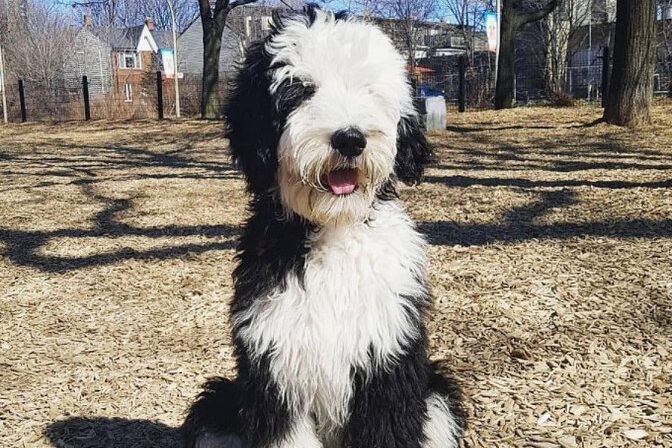
The Sheepadoodle’s tale began in the United States around 1995, mixing the Old English Sheepdog—an 80-pound English herder from the 1700s to guard sheep—with the Standard Poodle (60 pounds, German retriever from the 1500s). Breeders paired Sheepdog goofiness with Poodle smarts and low-shed curls, hooking allergy-prone folks wanting a big, friendly pal. It popped up as doodles gained traction, tied to rural kennels loving English roots.
At 45-85 pounds with a 12-15-year span, Sheepadoodles blend Sheepdog herding—guarding 100+ sheep in 18th-century logs—with Poodle wit, Coren’s second-ranked pro for quick tasks. The Orthopedic Foundation says hybrid vigor cuts the Sheepdog’s 15% hip dysplasia odds, and their shaggy, curly coats reflect an English past, now thriving as curly, affectionate buddies.
34. Shepadoodle (German Shepherd + Poodle)
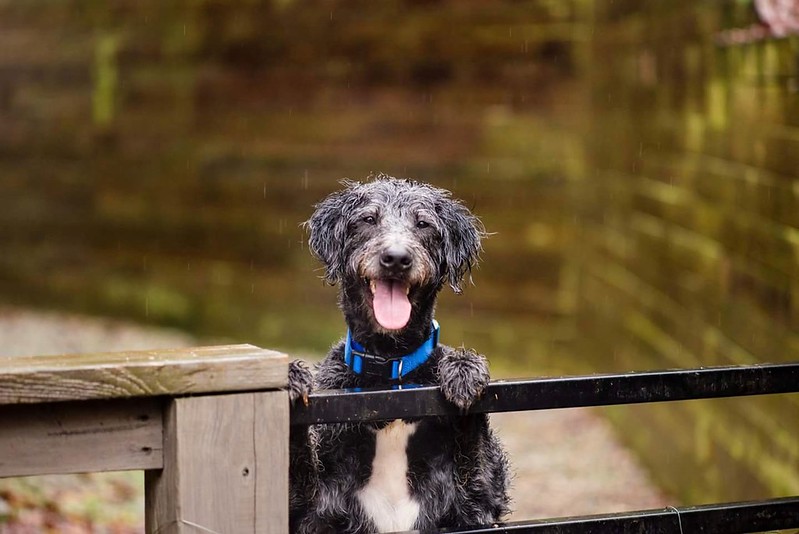
The Shepadoodle is a loyal and intelligent hybrid that combines the German Shepherd’s work ethic with the Poodle’s intelligence and hypoallergenic coat. Originally bred in the 1960s for use as military police dogs, Shepadoodles have since become popular as family pets due to their versatility and affectionate nature. These medium-to-large dogs typically weigh 50–90 pounds and stand 22–28 inches tall. Their coats can range from wavy to curly and come in various colors like black, tan, white, or sable.
Shepadoodles are highly trainable and excel in obedience training, agility, and even service work. They are protective of their families but friendly when properly socialized. These hybrids require regular exercise to manage their high energy levels—long walks, hikes, or play sessions are ideal. Grooming needs depend on their coat type; curlier coats require frequent brushing to prevent matting. Whether adopted from a breeder specializing in working doodle mixes or found at a rescue group, Shepadoodles make excellent companions for active families who want a loyal and intelligent dog.
35. Shih-Poo / Poo Shi (Shih Tzu + Poodle)

The Shih-Poo’s story began in the United States in the late 1990s, blending the Shih Tzu—a 10-pound Chinese lapdog from 1000 BCE for emperors—with the Toy Poodle (4-6 pounds, German retriever from the 1500s). Breeders boosted Shih Tzu cuddles with Poodle smarts and low-shed curls, hooking urban allergy folks wanting a small, sweet pal. It popped up as doodles surged, tied to suburban kennels loving ancient vibes.
At 8-18 pounds with a 12-15-year span, Shih-Poos mix Shih Tzu warmth—Tang Dynasty tales say they cuddled rulers—with Poodle wit, Coren’s second-ranked pro for quick tricks. AKC stats show hybrid vigor cuts the Shih Tzu’s 50% breathing trouble odds, and their plush, curly coats reflect a 3,000-year Chinese past, now thriving as curly, cuddly buddies.
36. Toy Goldendoodle (Golden Retriever + Toy or Miniature Poodle)
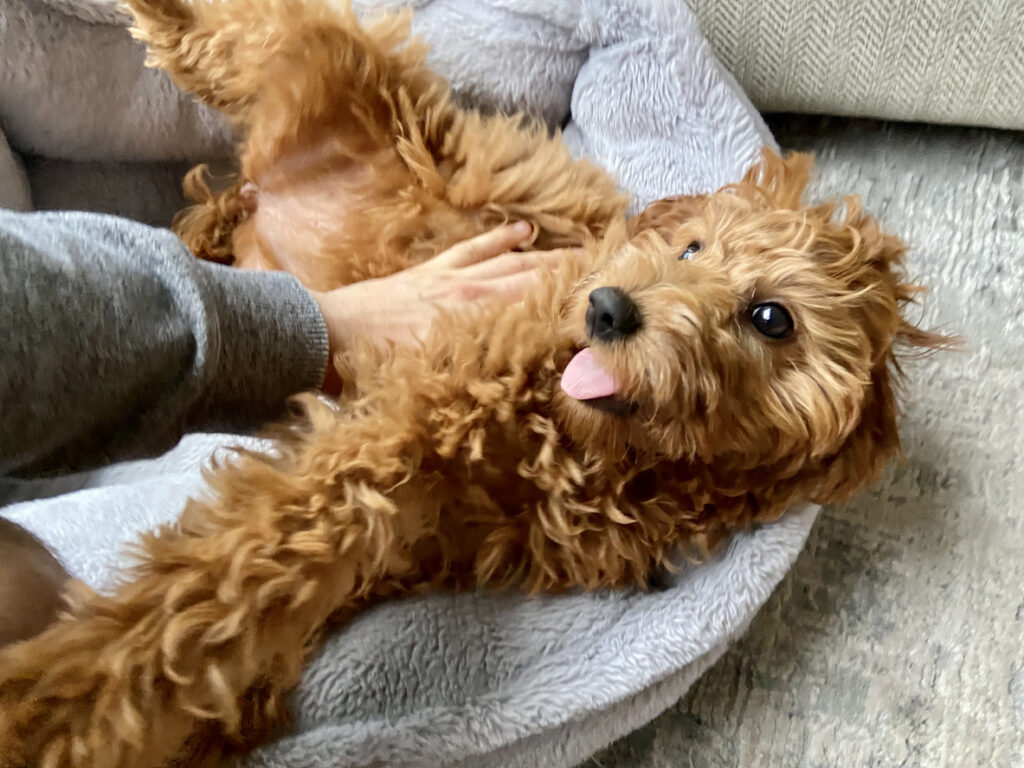
The Toy Goldendoodle’s story began in the United States in the late 1990s, mixing the Golden Retriever—a 70-pound Scottish game retriever from the 1860s—with the Toy or Miniature Poodle (4-15 pounds, German retriever from the 1500s). Breeders shrank the Goldendoodle’s size with Golden warmth and Poodle smarts, hooking urban allergy folks wanting a compact, friendly pal. It popped up as doodles surged, tied to suburban kennels.
At 10-25 pounds with a 12-15-year span, Toy Goldendoodles blend Golden retrieving—20+ fetches daily in Scottish logs—with Poodle wit, Coren’s second-ranked star for quick tricks. The Orthopedic Foundation says hybrid vigor trims the Golden’s 20% hip dysplasia odds, and their golden, curly coats reflect a hunting past, now thriving as curly, cuddly buddies.70. Weimoodle (Weimaraner + Poodle)
37. Weimardoodle (Weimaraner + Poodle)
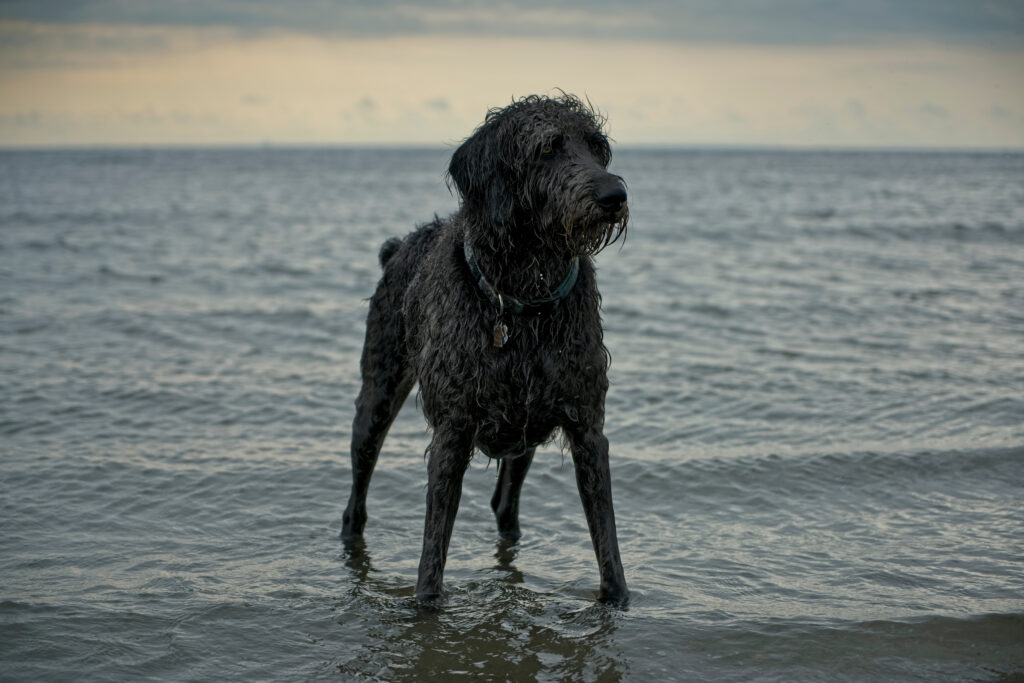
The Weimardoodle is a sleek and athletic mix of the Weimaraner and Standard Poodle. These medium-to-large hybrids typically weigh 45–70 pounds and stand 20–27 inches tall at the shoulder. Known for their elegant appearance, Weimardoodles often have wavy or curly coats that come in shades of gray, silver, or black. This hybrid was developed to combine the hunting instincts of the Weimaraner with the intelligence and hypoallergenic coat of the Poodle.
Weimardoodles are energetic dogs who thrive in active households where they can participate in outdoor activities like running, hiking, or swimming. They are affectionate and bond closely with their families but may be reserved around strangers due to their Weimaraner heritage. Their intelligence makes them quick learners during training sessions, but they require consistent mental and physical stimulation to prevent boredom-related behaviors like chewing or digging. Regular grooming is necessary to maintain their coats and minimize shedding. Whether adopted from a breeder or found at a rescue group specializing in sporting breeds, Weimardoodles make loyal companions for active individuals or families.
38. Westiepoo (West Highland White Terrier + Poodle)
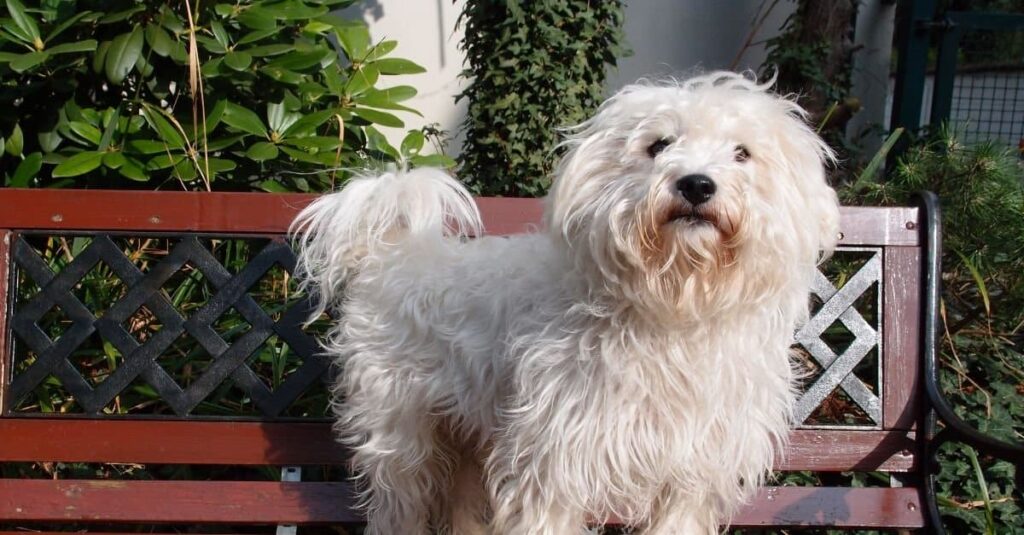
The Westiepoo is an adorable mix of the feisty West Highland White Terrier and the intelligent Toy or Miniature Poodle. This small hybrid typically weighs 10–20 pounds and stands 11–17 inches tall at the shoulder. Known for their playful personalities and fluffy coats, Westiepoos are ideal for apartment living or smaller homes. Their coats can range from wavy to curly and come in shades of white, cream, or apricot.
Westiepoos are lively companions who love spending time with their families. They’re great with children and other pets when properly socialized but may inherit some stubbornness from their Westie parentage. These hybrids are intelligent and eager to learn, making them relatively easy to train with consistent positive reinforcement. Regular grooming is essential to keep their coats looking neat while preventing tangles or mats. Whether adopted from a breeder specializing in small doodle mixes or found at a rescue group, Westiepoos make delightful pets for first-time owners or seniors seeking a loving companion.
39. Whoodle (Soft Coated Wheaten Terrier + Poodle)
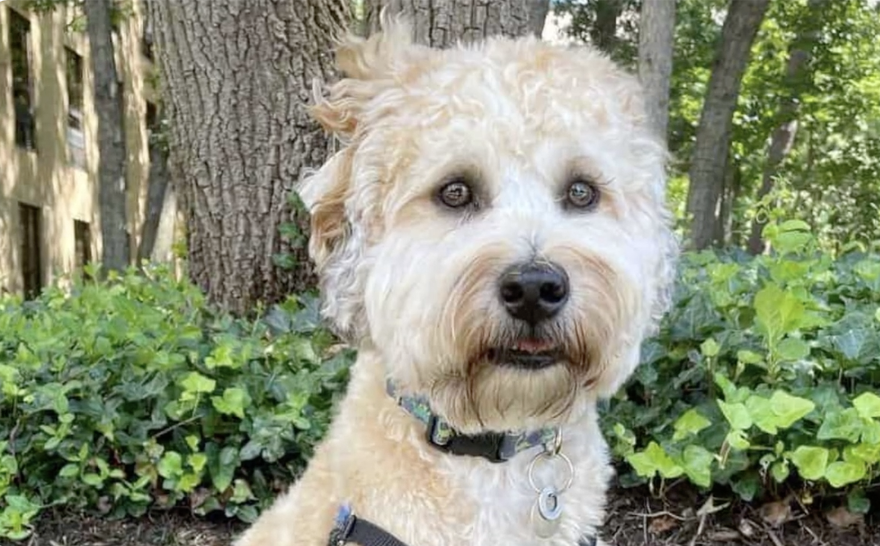
The Whoodle’s tale began in the United States around 2000, blending the Soft Coated Wheaten Terrier—a 40-pound Irish farm dog from the 1700s to guard livestock—with the Standard Poodle (60 pounds, German retriever from the 1500s). Breeders paired Wheaten cheer with Poodle smarts and low-shed curls, targeting allergy-prone folks wanting a friendly, medium pal. It popped up as doodles surged, tied to rural kennels loving Irish roots.
Weighing 20-45 pounds and lasting 12-15 years, Whoodles mix Wheaten agility—guarding farms in 18th-century logs—with Poodle wit, Coren’s second-ranked pro for quick tasks. AKC stats show hybrid vigor cuts the Wheaten’s 10% protein-losing disease odds, and their silky, curly coats reflect an Irish past, now thriving as curly, spirited buddies.
40. Woodle (Welsh Terrier + Poodle)
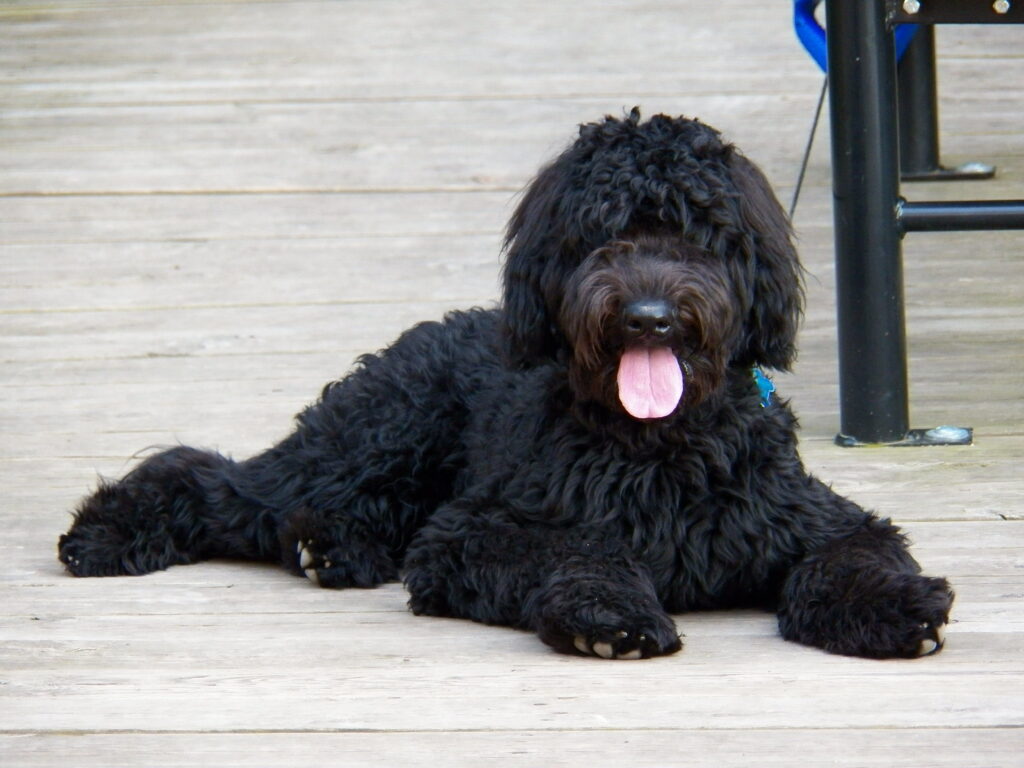
The Woodle got going in the United States or UK around 2000, mixing the Welsh Terrier—a 20-pound Welsh ratter from the 1700s for rugged vermin—with the Toy or Miniature Poodle (4-15 pounds, German retriever from the 1500s). Breeders kept Welsh feistiness with Poodle smarts and low-shed curls, targeting allergy-prone folks wanting a small, plucky pal. It hit as doodles surged, tied to suburban kennels loving Celtic grit.
Weighing 10-20 pounds and lasting 12-15 years, Woodles blend Welsh digging—10+ feet in 18th-century logs—with Poodle wit, Coren’s second-ranked star for quick commands. The Orthopedic Foundation says hybrid vigor trims the Welsh’s 10% skin allergy odds, and their wiry, curly coats reflect a Welsh past, now thriving as curly, spunky pets.
41. Yorkipoo (Yorkshire Terrier + Poodle)

The Yorkipoo is a pint-sized hybrid that combines the spirited Yorkshire Terrier with the intelligent Toy Poodle. These tiny dogs typically weigh 4–15 pounds and stand 7–12 inches tall at the shoulder, making them perfect for apartment living or smaller homes. Yorkipoos are known for their playful personalities and hypoallergenic coats that can range from straight to curly in texture.
Yorkipoos are affectionate lapdogs who thrive on attention from their families. They’re excellent with older children but may be too delicate for rough play with younger kids. Their intelligence makes them easy to train, though they can inherit some stubbornness from their Yorkie parentage—consistent training is key! Regular grooming is necessary to maintain their soft coats while preventing tangles or mats. Whether adopted from a reputable breeder or found at a rescue group specializing in small doodle mixes, Yorkipoos bring joy and companionship to any household.
42. Zuchon Doodle / Zuchondoodle (Shih Tzu + Bichon Frise + Poodle)
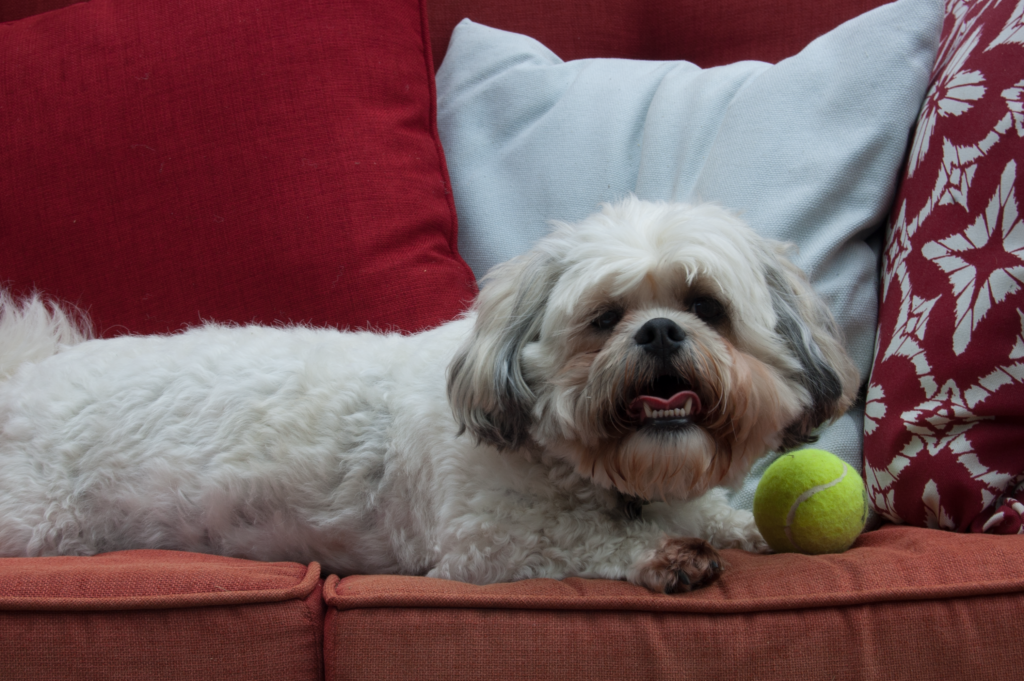
The Zuchon Doodle kicked off in the United States around 2005, a triple mix of the Shih Tzu (10 pounds, Chinese lapdog from 1000 BCE), Bichon Frise (12 pounds, French companion from the 1300s), and Toy Poodle (4-6 pounds, German retriever from the 1500s). Breeders amped the Zuchon’s cuddly charm with Poodle smarts and low-shed curls, targeting allergy-prone folks wanting a plush, friendly pal. It hit as doodles branched out, tied to specialty kennels chasing a triple-threat lapdog.
Weighing 8-20 pounds and lasting 12-15 years, Zuchon Doodles blend Shih Tzu warmth—Tang Dynasty tales say they cuddled rulers—Bichon cheer from French courts, and Poodle wit, Coren’s second-ranked pro for quick commands. AKC stats show hybrid vigor cuts the Shih Tzu’s 50% breathing trouble odds, and their plush, curly coats reflect a triple past, now thriving as curly, cuddly companions.
Doodles aren’t AKC-recognized breeds—they’re hybrids, deliberate crosses of purebreds, not random mutts—yet controversy swirls. Conron lamented in a 2019 ABC interview how overbreeding fueled a $2 billion industry, with 1 in 4 doodles ending up in U.S. shelters annually due to impulse buys, per ASPCA data. Science backs their appeal: a 2021 Journal of Veterinary Internal Medicine study shows hybrid vigor boosts lifespans to 10-15 years, and Poodles rank second on Stanley Coren’s intelligence list. Health risks like hip dysplasia (20% in big purebreds, OFA) persist, but the goal was smarter, healthier companions. Adopt, don’t shop—shelters are full! Which doodle’s your favorite? Got a curly buddy? Share your story!


